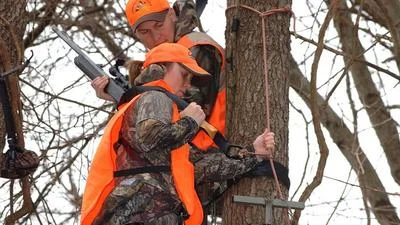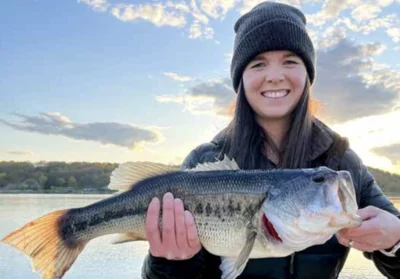As the spring spawn gives way to summer, anglers are adjusting their tactics to continue landing post-spawn largemouth bass across lakes in the region.
"It's a bit unpredictable right now," Knox Marine’s Brodie Steele told Mount Vernon News. "When the bass are biting, they're aggressive, but when they're not, it can be challenging."
Steele said that while some bass may still linger near spawning grounds, many have moved out into deeper waters, ranging from 8 to 10 feet. He notes a diverse approach among successful anglers, who are employing deep-diving crankbaits, drop shots, spinnerbaits and topwater lures to entice post-spawn bass.
He advises fellow anglers to target areas with fry, suggesting focusing near laydowns, brush piles, and structures where bass are guarding their young.
"Whether it's 10 feet from the shore or 40 feet out, finding fry is key to finding bass," Steele said.
The shift in fishing strategies reflects the broader ecosystem dynamics affecting bass behavior post-spawn.
Bass change their behavior as they recuperate from the stressful spawning season and have a tendency to lay low in the water and near obstacles.
Steele suggested keeping that behavior pattern in mind.
“If it were me just going out, I would say grab a spinner bait and throw down near lay down logs, brush piles sticking out, see if you can find fry. If you find fry, you're going to find a bass,” Steele said.
Steele said he has seen some tournament participants landing large fish post spawn.
“At all these tournaments I've been seeing the guys are still catching them,” he said. “It's been pretty good.”
Bass are notoriously weak post spawn, which occurs as early as mid April and lasts as late as the end of July each year.
In the aftermath of bass spawn, anglers often face a challenging period when the once abundant and aggressive shallow bass seem to vanish.
Experts such as pro Jason Christie say the strategy at this time of year is to change depth as post-spawn bass haven't disappeared; they've just moved deeper.
Christie uses a depth finder to find where the fish are hiding post spawn.
“I won’t start fishing until I see something I like,” Christie told the Union Sportsmen’s Alliance. “I prefer to actually see fish on my depthfinder. They will school up right after the spawn, but a school can be anywhere from three or four bass on some lakes or 25 or even 50 bass on others.”
Christie suggests swim baits and deep-diving crankbaits post-spawn, utilizing their ability to cover water efficiently and provoke strikes from both active and sluggish bass.
These lures are effective because they reach the bottom where post-spawn largemouths tend to linger, transitioning later to suspended positions under bait schools or finding shelter in deeper structures or shallow covers for the summer.
Optimal water temperatures for the bass fingerlings, or fry, is between 81.5 to 86 degrees Fahrenheit.
Largemouth bass exhibit varied growth rates, reaching lengths ranging from 2 to 8 inches in their first year and 9 to 10 inches by their second or third year.
Research has also revealed post spawn bass prefer crawfish over other prey, demonstrating a significant protein preference that influences their feeding behavior and growth patterns.
Ohio pro angler Christian Highfield recently filmed a video of himself landing a hefty largemouth bass in the 2024 post spawn season.
Highfield, who has been crisscrossing the region participating in bass tournaments, reported that his party landed four fish with a high weight of five pounds.
Highfield posted a video of the successful fishing trip to his “Crankin With Christian” YouTube channel.







